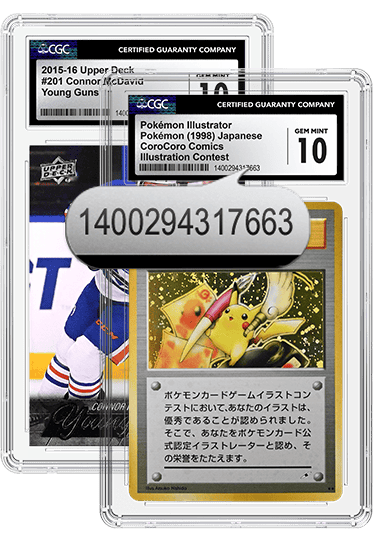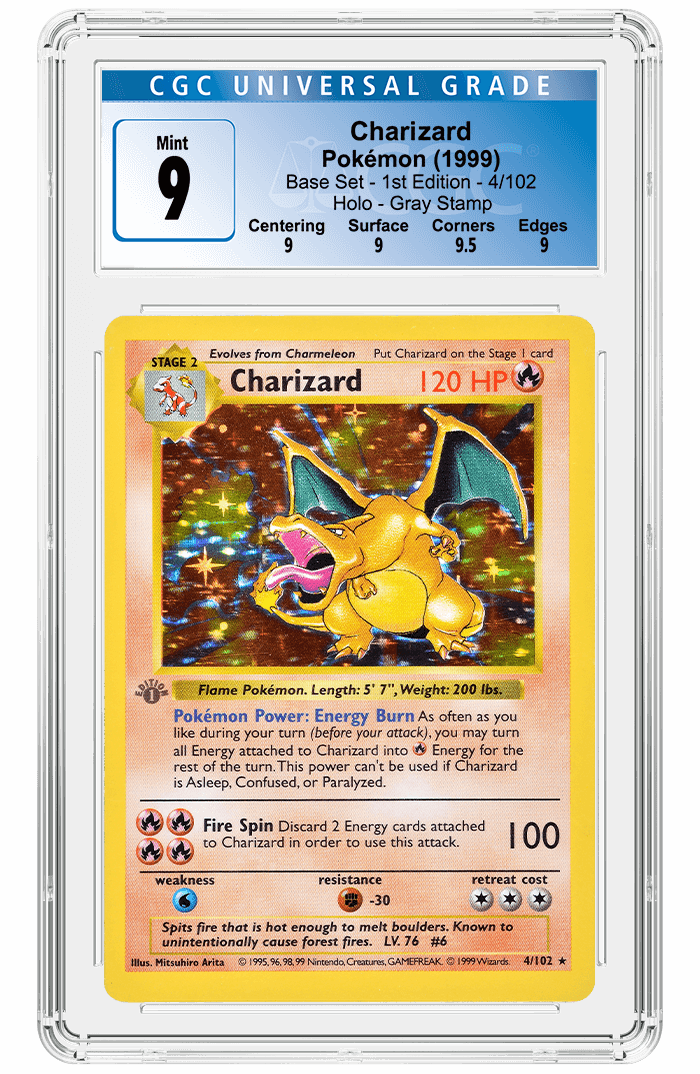CGC Trading Cards Takes a Close Look at Magic's Alternate Fourth Edition
Posted on 8/21/2020
The graders at CGC Trading Cards use advanced equipment to evaluate cards, including devices that perform ultra-microscopic inspections. Some of the coolest details that we see when using this equipment are printing anomalies that identify varieties within a particular set. Magic: The Gathering’s Alternate Fourth Edition is one such example.
 |
 |
| A standard Force of Nature card from Magic's Fourth Edition and one from the Alternate set. Read on to learn how to distinguish between the two. Click images to enlarge. |
|
Magic’s initial surge in popularity was remarkable, and Wizards of the Coast (WotC) — the game’s publisher — struggled to meet demand. The company’s initial supply of 2.6 million cards quickly sold out, which meant customer orders were only partially filled in most cases.
So, from Magic’s debut in 1993 until just before the Fallen Empires set was released in 1994, WotC received orders for product in many multiples of what customers actually wanted. Customers expected to receive far less than what they ordered, and they hoped that by ordering more, they might get more.
With the Fallen Empires set, WotC could finally meet its customers’ full orders — and it did. However, this caused quite the headache for distributors because many had again over-ordered, expecting to receive less product than requested. When the entirety of the orders was delivered, several distributors simply did not have the funds to foot the bill.
After Fallen Empires, Magic’s popularity continued to surge — so much so that WotC looked for another printer to help meet demand and prevent another inflated ordering debacle. For the Fourth Edition set, released in 1995, WotC contracted United States Playing Card Company (USPCC) in Cincinnati, Ohio to manufacture a portion of the cards, along with its primary printer, Carta Mundi, which was located in Belgium.
Fourth Edition was a set that many anticipated because it included several important reprints from early sets that were not found in the previous Revised set. Gone, however, were several powerful cards, most notably the dual lands, which are among the most coveted cards in Magic history.
As it turned out, USPCC contributed only a small percentage of the total population of the Fourth Edition set. Most of these cards were produced by Carta Mundi in Belgium.
To the average player, the differences between the Carta Mundi-produced Fourth Edition cards and WotC-produced cards were indiscernible, and the packaging equally so. However, WotC decided to pull the USPCC cards from its general inventory. Those in charge felt that someone aware of the differences could identify them within a deck, and they would become marked cards. And with that, the “Alternate Fourth Edition” was born.
Indeed, as collectors grew more studious, the differences in the Alternate Fourth Edition became quite clear. Early Magic cards were produced with a very well-defined, four-color, rosette printing pattern, while Alternate Fourth Edition cards display a stochastic printing pattern.
 |
 |
| A standard Fourth Edition card with the rosette printing pattern and an Alternate Fourth Edition card with the stochastic printing pattern. Click images to enlarge. |
|
Another trait of Alternate Fourth Edition cards is that they do not glow under ultraviolet light where standard cards react strongly. This makes identification within a group easy as Alternate Fourth Edition cards darkly stand out from standard Fourth Edition cards with a UV light.
 |
|
| Glowing standard Fourth Edition cards under UV light and a lone Alternate Fourth Edition card. Click image to enlarge. |
|
Another failsafe way to identify Alternate Fourth Edition cards is on the backs in the word Magic: the upper right most portion of the "A" is noticeably darker.
 |
 |
| A standard Fourth Edition back and an Alternate Fourth Edition back with the dark "A." Click images to enlarge. |
|
Sealed Alternate Fourth Edition sets still exist and bring a hefty premium over standard cards. They are only known to be packaged in starter decks and not typical booster packs. These Alternate Fourth Edition starter decks and displays are identifiable by their production location.
Estimates on the proportion of the population that these interesting varieties comprise can only be speculated, but most agree that 1/100 is very optimistic and feel 1/500 in more appropriate. Putting together a Near Mint to Mint set can be a particularly daunting task as many of these cards were not carefully preserved early on. More than a few found themselves sliding across kitchen tables on game night.
Stay Informed
Want news like this delivered to your inbox once a month? Subscribe to the free CGC eNewsletter today!

